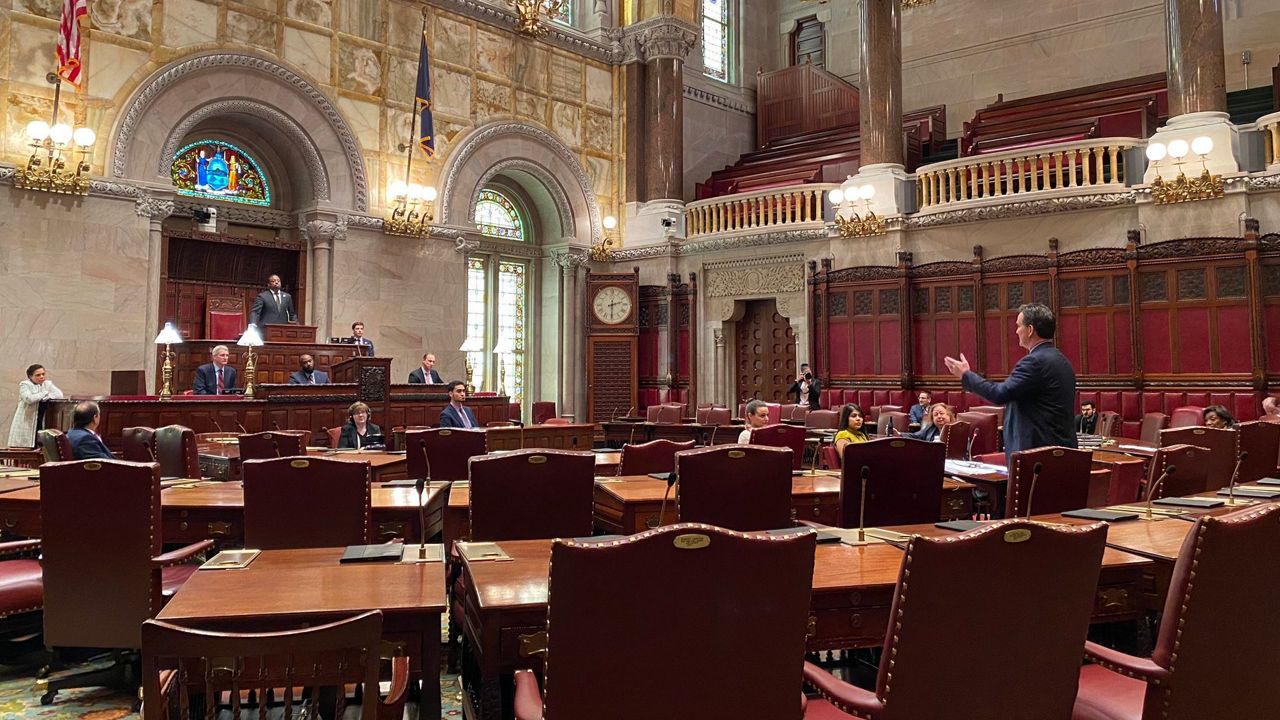The New York state Legislature has approved a 2020-21 state budget, perhaps one of the most difficult spending plans lawmakers have had to vote on in a decade, when a recession last tore through the state's economy.
And this budget was very different, approved in the middle of a pandemic that has largely upended daily life in the state and around the country while sickening thousands, including several members of the Assembly and Senate.
Leading up to this week in March, hallways are usually teeming with protesters and their chants boom off the marble walls. Lobbyists hover outside legislative chambers, slipping their cards to the Sergeant at Arms to deliver to a lawmaker inside.
But this year the corridors were silent and for the first time in state history, chamber seats remained empty as lawmakers cast their votes remotely.
The significance of that moment was not lost on legislative laders.
“This nearly empty chamber it really is surreal,” Senate Majority Leader Andrea Stewart-Cousins said to only a handful of people in the Senate chambers. “You know, actually for me its chilling. In many ways it’s upsetting, but it’s a testament to this great institution and the work that continues here.”
Starting off the year, the state was facing about a $6 billion budget deficit that seemed quite large at the time.
However, now that the coronavirus has shut down businesses, leaving hundreds of thousands of people without jobs, the amount of tax revenue coming in is projected to drop significantly.
RELATED | Businesses, Battered By Pandemic, Say Budget Doesn't Help
With the state now facing a potential $15 billion revenue shortfall, there were few wins for either side in the state budget.
Here is a short, preliminary breakdown of some of the big items in the budget:
There was a $104 million increase in funding to school aid, but Foundation Aid funding was held flat. This means that there will be no increases to Foundation Aid in 2020-2021.
SEE ALSO | Foundation Aid Freeze: It’s Déjà Vu All Over Again
However, the most recent federal stimulus bill is providing around $1 billion to grade schools, which will help offset some of this loss. But no immediate cuts has many education advocates holding their breath for now.
The budget does allow for funding amounts to change throughout the year based on tax revenue coming in.
Medicaid spending will increase by 3 percent, or about $500 million. Most of the cost-saving Medicaid Redesign Team recommendations were adopted in the budget. This includes capping statewide enrollment and shifting some costs onto local governments.
There were also changes to the criminal justice reform bills that were passed last year. These changes include giving judges a broader authority to set bail on additional crimes, such as repeat offenders, hate crimes, sex crimes and high-level drug offenses.
There were also changes to discovery laws. Prosecutors will have 20 days instead of 15 to turn over initial discovery to defense attorneys when the suspect is in custody and 35 days when the suspect is already out.
Other big items included:
- A $3 billion Restore Mother Nature Bond Act that will need to be approved by voters.
- The legalization of paid gestational surrogacy
- The legalization of e-bikes and e-scooters.
- A mandatory 5-7 paid sick days for all employees.
- A ban on flavored vaping products. Flavored products that get authorized by the FDA will be allowed to return to the market.
- A ban on fentanyl analogs
- Prohibiting gender pricing discrimination, commonly referred to as the "Pink Tax."
- The legalization of marijuana once again was not approved in the spending plan.


